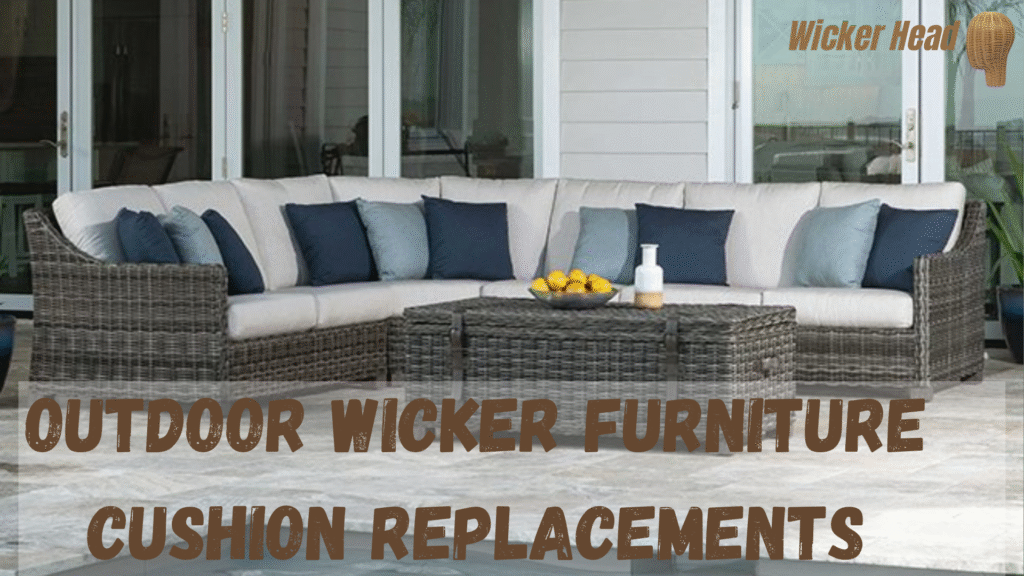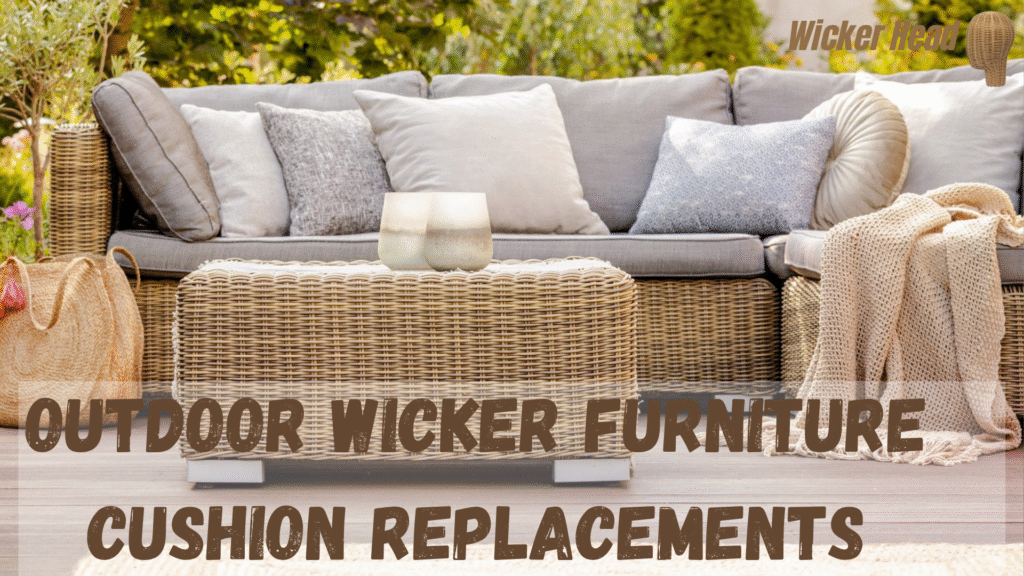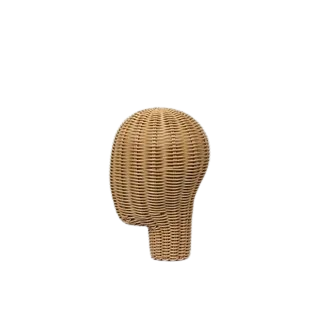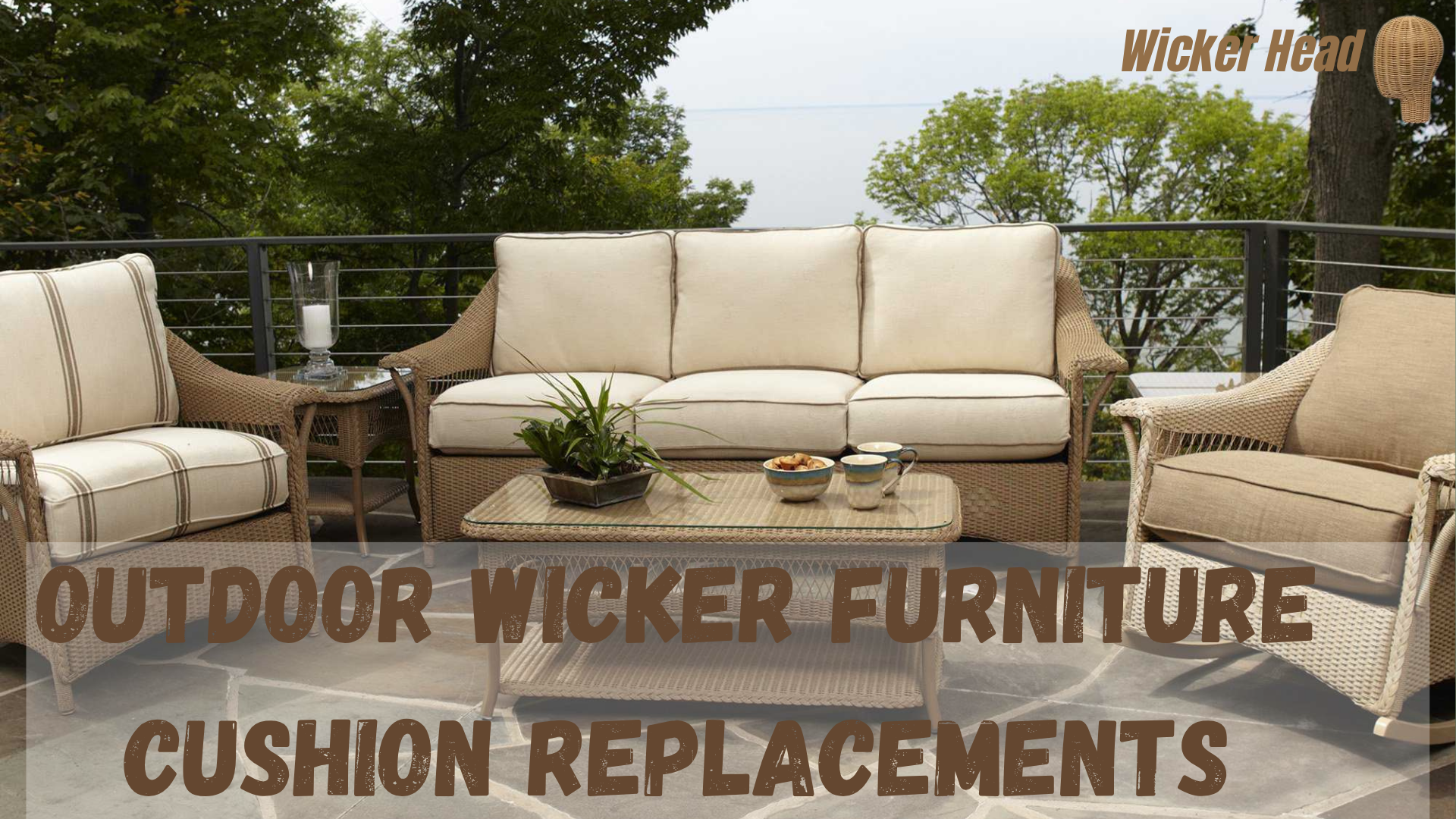Outdoor wicker furniture looks beautiful, but over time, the cushions that come with it can wear out, fade, or lose their comfort. That’s when outdoor wicker furniture cushion replacements become essential. Replacing old cushions isn’t just about comfort—it’s about making your outdoor space look new again, without buying all-new furniture.
In this guide, we’ll help you understand how to choose the right replacement cushions, what materials last outdoors, and how to make your patio or garden seating look and feel amazing again.
Why Replacing Outdoor Wicker Furniture Cushions is Important
Over time, outdoor cushions face a lot of wear. Sun, rain, dust, and constant use can wear them down faster than indoor furniture.
Worn Cushions Lose Comfort
Old cushions may flatten or become lumpy, making your seating uncomfortable. New cushions restore the softness and support.
Faded Colors Affect Appearance
Sunlight can bleach cushion fabric, making your whole setup look tired. Replacing them brings vibrant color back into your outdoor area.
Mold and Mildew Risk
Outdoor cushions often absorb moisture. If they aren’t cleaned or protected, they can develop mold or a musty smell—replacement solves that.
A Fresh Look Without Buying New Furniture
Instead of replacing your wicker chairs or sofas, simply get new cushions that match your updated décor style or seasonal theme.
Types of Cushions to Consider for Replacement
Not all outdoor cushions are the same. Knowing the type that fits your furniture and needs will make the replacement process easier.
Seat Cushions
These are the flat cushions you sit on. They come in square, rectangular, and custom shapes depending on your furniture type.
Back Cushions
Used for comfort and support, back cushions are often softer and more flexible. Many designs require both seat and back cushions together.
Full-Length Chaise Cushions
For lounge chairs, long padded cushions with foldable sections are common. These should match your chair’s shape to sit properly.
Custom-Shaped Cushions
Wicker furniture often has unique sizes or curves. You can order custom cushion replacements tailored to your specific dimensions.
Explore cushion styles at WickerHead for modern, durable replacements that fit perfectly.

Measuring Your Wicker Furniture for Cushion Replacements
Accurate measurement is the key to getting cushion replacements that fit snugly and look professional.
Measure Width and Depth of the Seat
Use a measuring tape from edge to edge for width, and front to back for depth. Always round down slightly for a tight fit.
Measure Back Height and Width
Back cushions need both vertical height and width. If your backrest is curved or sloped, trace the shape on paper for custom orders.
Note Thickness Preferences
Standard cushions range from 2 to 5 inches thick. Thicker cushions offer more comfort, but may sit too high on low chairs.
Consider Cushion Ties and Fasteners
Some cushions tie to the chair; others use Velcro. Measure where these attach if needed to avoid slippage or misalignment.
Best Fabrics for Outdoor Cushion Replacements
Choosing the right fabric is just as important as size or color. Outdoor conditions demand materials that can resist weather and wear.
Solution-Dyed Acrylic
This is the top choice for outdoor cushions. It resists fading, mold, and stains while staying soft to the touch.
Polyester (Treated)
More budget-friendly than acrylic, polyester can still perform well if treated with UV and water-resistant coatings.
Olefin (Polypropylene)
Olefin is strong, stain-resistant, and great in humid or wet conditions. It also dries quickly and holds color well.
Canvas (For Covered Areas)
Cotton-blend canvas looks nice but doesn’t handle water well. Use only in covered patios or porches with no direct rain exposure.
Choosing the Right Cushion Filling
The inside of the cushion matters just as much as the fabric outside. The right filling gives long-lasting comfort and shape.
Polyurethane Foam
This is firm, supportive, and commonly used for seat cushions. Look for outdoor-rated foam that resists moisture.
Polyester Fiberfill
Fiberfill is soft and fluffy, used in back cushions for a pillowy feel. It compresses faster, so it’s better for lighter use areas.
Memory Foam
High-end outdoor cushions may include memory foam. It’s extremely comfortable but requires waterproof protection to avoid damage.
Quick-Dry Foam
Best for wet areas, this foam allows water to drain quickly, preventing mildew and odor. Ideal for poolside furniture or rainy regions.
Styling Tips for New Outdoor Cushions
New cushions give you the chance to refresh your outdoor aesthetic. Use this opportunity to match or contrast with your outdoor setting.
Choose Colors That Pop
Go bold with coral, navy blue, or lime green to brighten up your patio. Bright colors look great in sunlight and liven up neutral furniture.
Stick to Natural Tones
For a peaceful, spa-like look, opt for beige, taupe, soft blue, or sage green. These tones blend with plants and wood decking.
Mix Solids and Patterns
Use one solid cushion set for seating and add a few patterned throw pillows for visual interest without being too busy.
Coordinate with Accessories
Match your cushion colors to rugs, umbrellas, or planters nearby. This makes your space look cohesive and well-designed.
Caring for and Maintaining Replacement Cushions
Even new cushions need maintenance. Simple care routines will keep your cushions looking good and lasting longer.
Use Furniture Covers When Not in Use
Protect cushions from dirt, UV rays, and rain by covering your furniture when it’s not being used—especially overnight or during storms.
Spot Clean Regularly
Wipe spills immediately with mild soap and water. Don’t use bleach unless the label says it’s safe.
Wash Removable Covers
If your cushions come with zippers, wash covers in cold water on a gentle cycle. Always air-dry to prevent shrinkage.
Store Indoors During Harsh Weather
During winter or the rainy season, bring your cushions indoors to protect them from long-term moisture damage.

Table of Contents
Where to Buy Quality Cushion Replacements
Getting cushions that look good and last requires choosing the right seller. Here’s where to start your search.
Specialty Outdoor Furniture Stores
Stores that focus on outdoor décor often offer better-quality, weather-tested products designed for long-term use.
Online Custom Cushion Retailers
Websites allow you to enter your exact sizes, choose your fabric and thickness, and get cushions made to fit.
DIY or Local Upholstery Shops
If you’re handy or have a favorite upholstery shop, you can customize your own cushions with local support.
Explore WickerHead
Find high-quality replacement cushions tailored for outdoor wicker furniture—great styles, durable fabrics, and perfect fits all in one place.
Eco-Friendly Cushion Replacement Options
Looking to upgrade your outdoor furniture while being eco-conscious? There are green options available for cushions too.
Recycled Fabrics
Some cushions are made from recycled plastic bottles or synthetic fibers, reducing waste while offering top performance.
Natural Latex Filling
Instead of foam, some cushions use natural latex—a biodegradable and breathable filling that’s good for the planet and your comfort.
Sustainably Made Covers
Look for cushions made using low-impact dyes or water-saving production methods.
Reuse Existing Foam
If your cushion shape is fine but the covers are worn, you can reuse the foam and just order new covers—less waste, lower cost.
Conclusion: Give Your Wicker Furniture a Fresh New Life
Replacing your old, worn-out cushions with outdoor wicker furniture cushion replacements is one of the simplest ways to upgrade your space. Whether you’re looking for extra comfort, brighter colors, or more durable fabric, a new set of cushions can completely transform your patio or garden seating.
The right replacements offer better support, resist the weather, and fit your furniture perfectly. From accurate measuring to picking the right material and styling the look—everything counts.
To explore stylish, weather-ready, and long-lasting cushion replacements, check out WickerHead. Your outdoor space deserves the refresh.

Frequently Asked Questions (FAQs)
1. How often should I replace my outdoor wicker furniture cushions?
Usually every 3–5 years, depending on how much use and weather exposure they get. If they flatten, fade, or develop mold, it’s time to replace.
2. Can I use indoor cushions as replacements?
No, indoor cushions aren’t made to handle sun, rain, or humidity. Outdoor-rated fabrics and foam are essential for durability.
3. How do I measure my furniture for new cushions?
Measure the width, depth, and thickness of your seat and back areas. Round down slightly for a snug fit, and consider tie placement.
4. What’s the best cushion fabric for outdoor use?
Solution-dyed acrylic is one of the best. It resists UV rays, mildew, and stains while remaining breathable and soft.
5. Are custom cushions worth the cost?
Yes, especially if your furniture has unique shapes or sizes. Custom cushions fit perfectly and often last longer.
6. Can I wash outdoor cushion covers in the machine?
If they’re removable, yes—use cold water and a gentle cycle. Always air-dry. Never put outdoor covers in a dryer.
7. Do all cushions come with ties or straps?
Not always. Some cushions use Velcro or just sit firmly in place. For windy areas, ties or straps are recommended.
8. Can I replace just the covers instead of the entire cushion?
Yes, if the inner foam is still in good condition. Replacing only the cover is cost-effective and eco-friendly.
9. Will my new cushions fade in the sun?
Not if you choose UV-resistant fabrics like solution-dyed acrylic or treated polyester. These materials stay vibrant longer.
10. Where can I buy high-quality replacement cushions?
Visit WickerHead for a curated selection of cushion replacements built to match wicker furniture perfectly.

